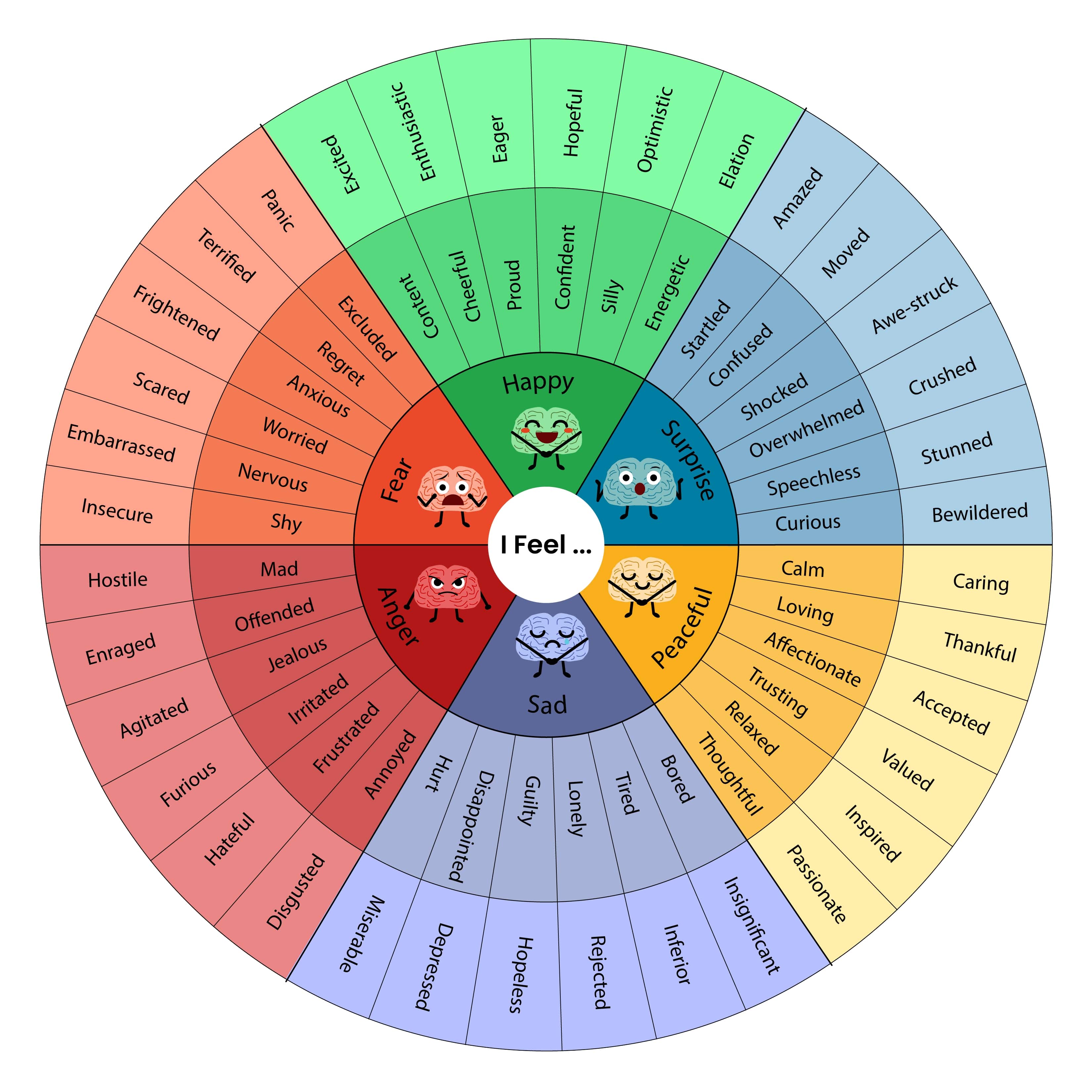|
Key Takeaways:
- Identifying emotions can be difficult for kids, especially if they are made up of several complex feelings.
- An emotion wheel is a model that allows individuals to identify primary emotions with varying intensities and combinations.
- There are several models that are useful in identifying emotions.
|
Putting a name to our emotions can be difficult. Sometimes the things we feel are so complex and overwhelming that it is almost impossible to describe them. There are even instances wherein we feel several emotions all at once, making it even more complicated to clearly identify each one.
With our capacity to feel so much, it can be challenging not to get lost or feel overwhelmed. Fortunately, there are some ways for us to organize these emotions to better understand them. One such method is by using what is called an emotion wheel, which we’ll go into detail here.
What is an Emotion Wheel for Kids?
An emotion wheel is a diagram or illustration that shows levels of emotions to help kids identify and understand their own or other people’s emotions. The first emotion wheel was created by psychologist Robert Plutchik, which is why it is commonly referred to as Plutchik’s Wheel of Emotions.
How Does an Emotion Wheel Work?
An emotion wheel works by showing children the eight basic emotions: joy, fear, surprise, anger, trust, sadness, disgust, and anticipation. Most modern versions of the emotion wheel will put these emotions at the center, then they branch out to more complex emotions as the wheel grows larger.

For instance, kids will find the primary emotion “anger” as one of the emotions in the middle of the wheel. Anger to a lesser degree might be “annoyance,” which can be found on the outer edge of the wheel, while the greater degree is rage, found in the very center of the emotion wheel. Plutchik’s wheel arranges each section in a flower shape, with each petal representing one emotion.
Every emotion on the wheel is color-coded, and the different degrees of these emotions are represented by lighter and darker colors. In the case of anger, for example, it is a shade of red while annoyance is more pink and rage is a darker red.
The emotion wheel also works by combining behaviors associated with emotions, such as aggressiveness (anger and anticipation) or awe (fear and surprise). These are found between the pairs of emotions in the flower shape.
Benefits of Using the Emotion Wheel
Kids can experience several benefits from using the emotion wheel.
This tool makes it easier to understand and express how we are feeling. This might not be necessary for more straightforward emotions (such as happiness or gratitude), but the wheel comes in handy for more complex emotions like apprehension or pensiveness.
Another benefit of using the emotion wheel is the ability of kids to see how different emotions connect. Each emotion is distinct, but they are also connected and can influence each other. The emotion wheel can show where different emotions intersect.
The emotion wheel can also teach kids how to cope with their emotions. It helps them identify the root causes of their emotions. Many children might struggle to express their feelings when they don’t know the root cause of their emotions. By understanding what is causing or triggering their emotions, kids can be more in control of what they feel, especially when their emotions seem more difficult to handle.
How to Use the Emotion Wheel to Know Yourself
One of the best ways kids can use the emotion wheel is to get to know themselves better. Here are different ways they can do just that:
Labeling your emotions
Labeling emotions is an effective way to stop emotional spirals before they get worse. But rather than ignoring emotions and pushing them away, labeling can help make sense of them.
This is because logic and emotional thoughts occur in two different parts of the brain. When kids feel their emotions, they are in the emotional part of the brain. But when they label their feelings, kids can pull themselves out of that emotional circuit and into the prefrontal cortex, which is responsible for reasoning, decision-making, and problem-solving [*].
Kids can practice using the emotion wheel whenever they notice they are feeling something, whether it’s positive or negative. The more they label their feelings, the better they will become at choosing how to respond to them.
Increasing self-awareness
The more children pay attention to their feelings, the more they can develop self-awareness. The emotion wheel can help develop a more extensive feelings vocabulary.
For instance, your child may be feeling tired and burned out, which is making it difficult to stay engaged at school. They can use the feelings wheel to identify their emotions. Guide them in using the wheel. Perhaps they relate to apprehension, which falls under fear. Understanding the primary emotion that they are feeling can help them identify the triggers for an emotional response.
Emotional regulation
Emotional regulation is the ability to respond to stressful experiences with a range of emotions that are socially acceptable and flexible enough to allow and delay spontaneous reactions as needed. Children who have strong emotional regulation skills are more resilient, work better in teams, and are more agile. The foundation of effective emotional regulation is possessing a good understanding and awareness of one’s emotions. This is where the emotion wheel comes in. Kids are more able to regulate their emotions when they can identify their emotional needs.
How to Use the Emotion Wheel to Know Those Around You
The emotion wheel is not just a tool for the self. It can also help kids get to know the people around them, whether they are friends, family members, or classmates.
A tool for communicating emotions
If your child struggles with explaining their feelings to others, an emotion wheel can help them start conversations about how they feel. Help them with identifying secondary feelings and, from there, talk about the combination of primary feelings causing that specific emotion.
A tool for understanding others
Not all kids will take the time to express their emotions. They may not feel safe or comfortable doing so, and there isn’t always time to talk about how they feel.
What your child might observe in others is the primary emotion, especially if others are feeling angry, sad, or happy. These primary emotions may overshadow secondary emotions, and understanding this is key to understanding others. For example, your child might have a schoolmate who is always irritable, which is actually a result of their deeper feelings of being overwhelmed by homework and feeling left out during playtime.
The Bottom Line
For many children, identifying simple or complex feelings using tools like the emotion wheel and feelings worksheets is important for self-development and interpersonal relationships. Recognizing and labeling one’s feelings is just one small part of the equation, an important starting point. Discussing and processing these emotions and acting on them is the next step.
Consulting a mental health professional is an additional way to help you and your child delve deeper into figuring out your emotions and how they impact your life.
Feel free to explore our feelings worksheets to further support your child with emotional identification and expression activities.
References:
- Lieberman M, Eisenberger N, Crockett M, et al. Putting feelings into words: affect labeling disrupts amygdala activity in response to affective stimuli. May 2007.






















































